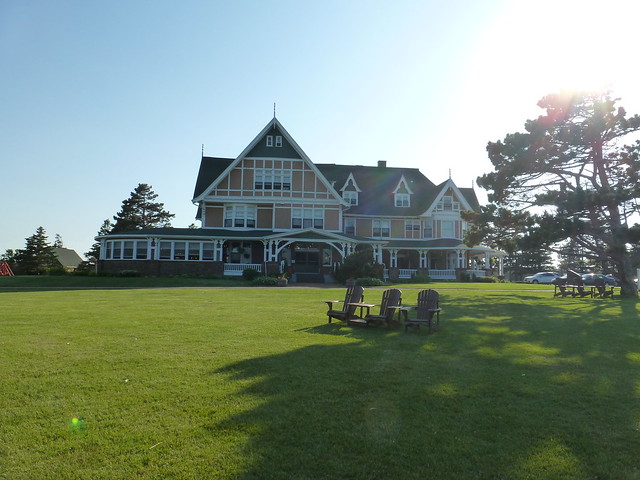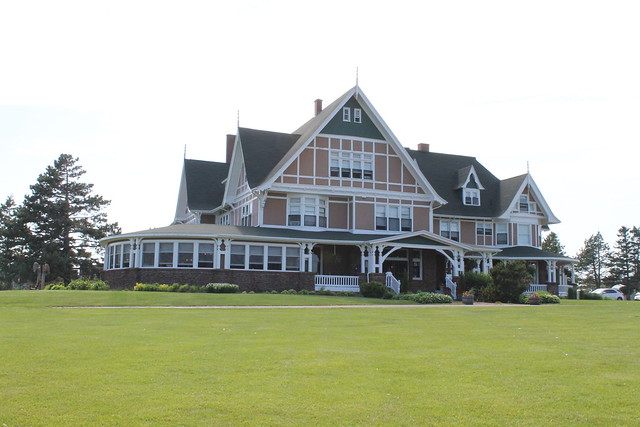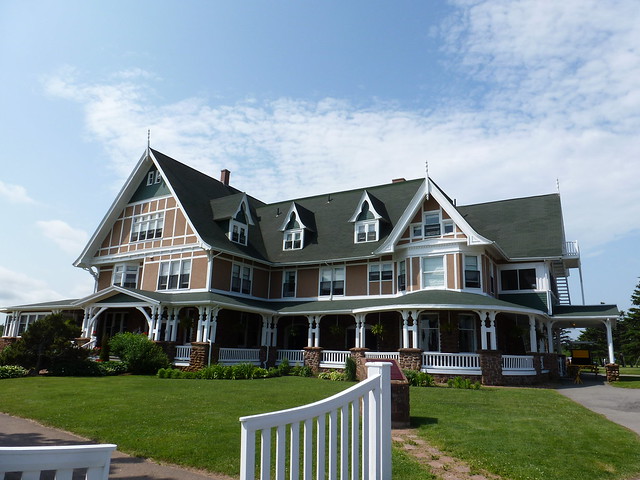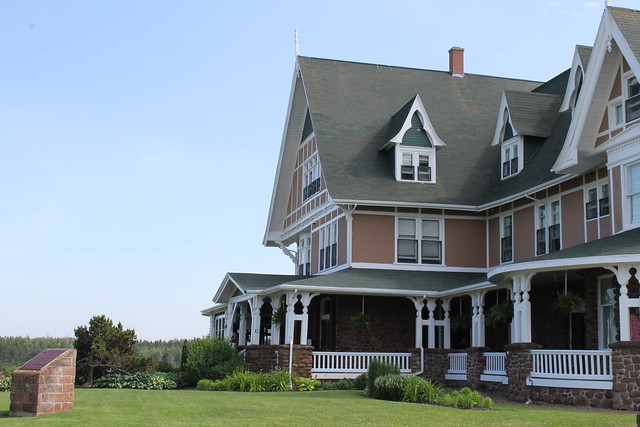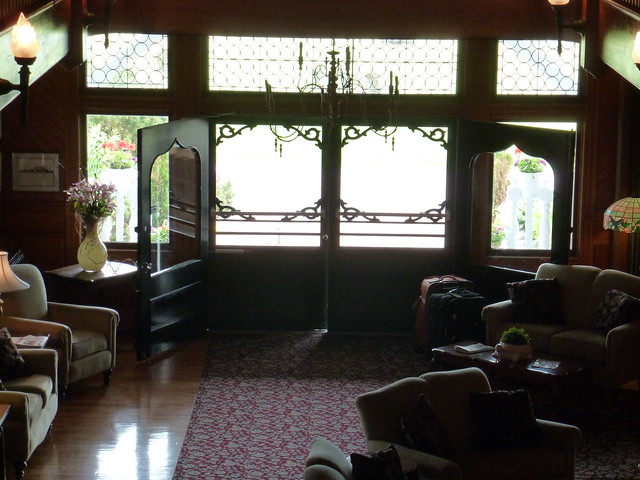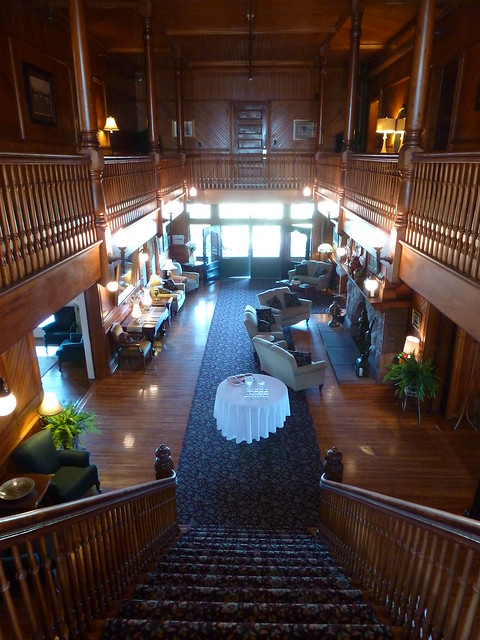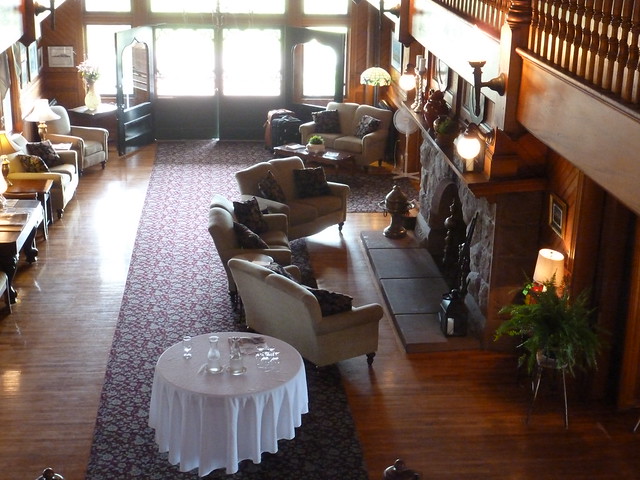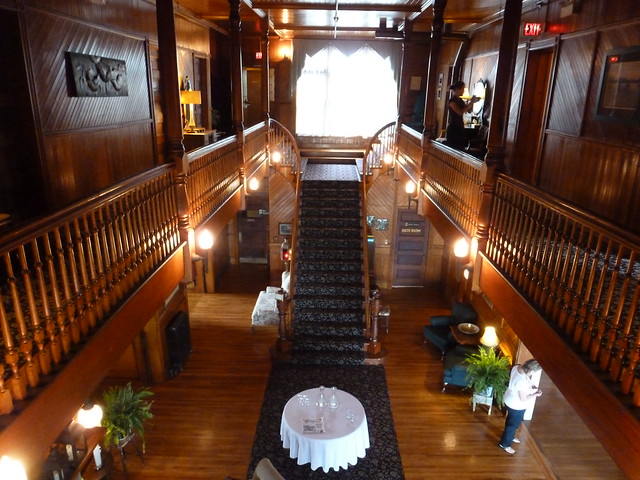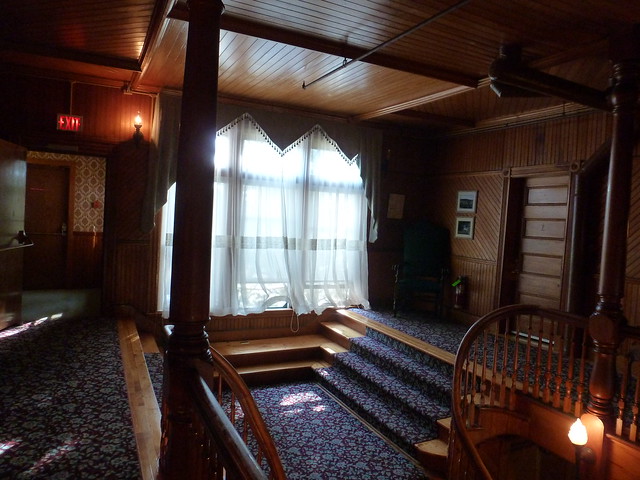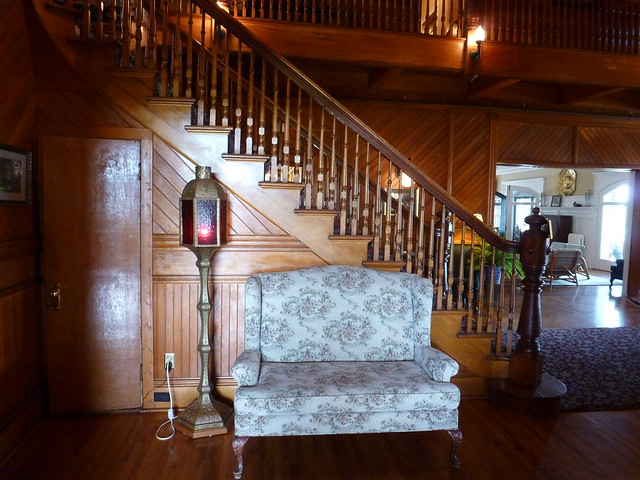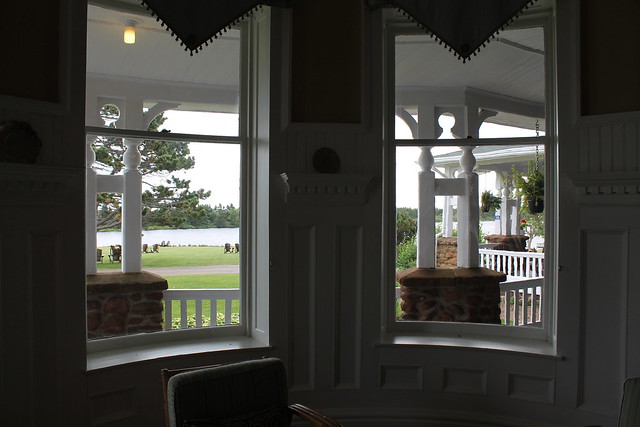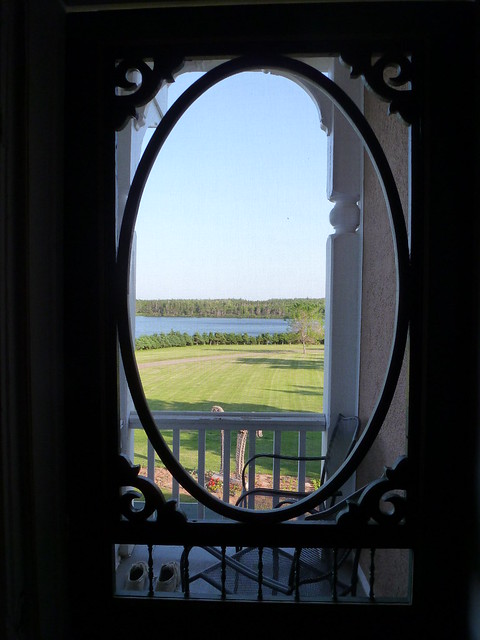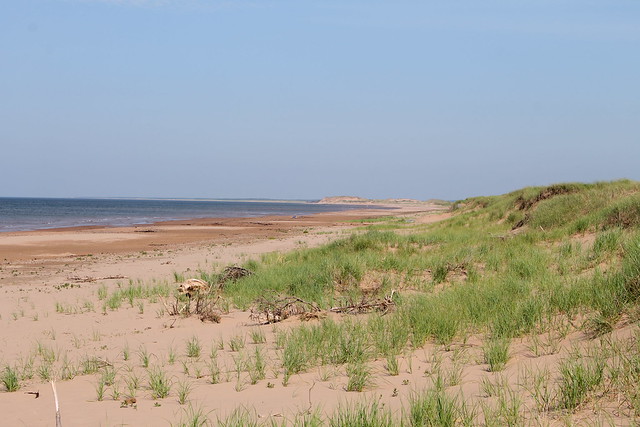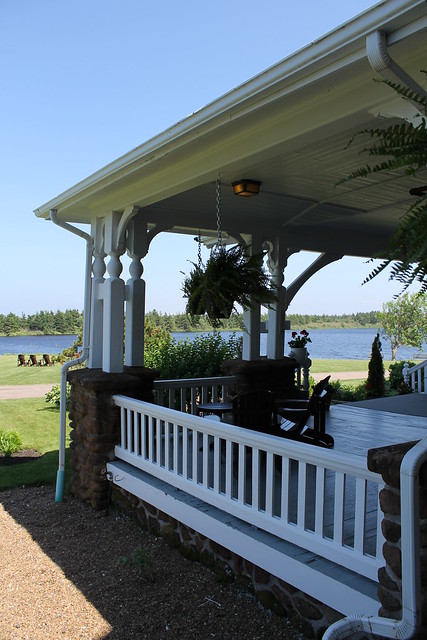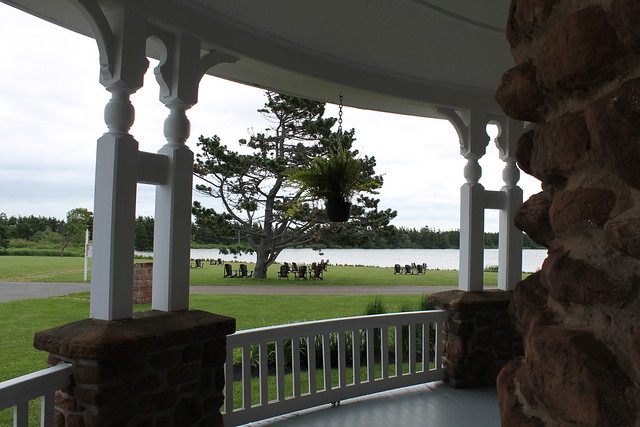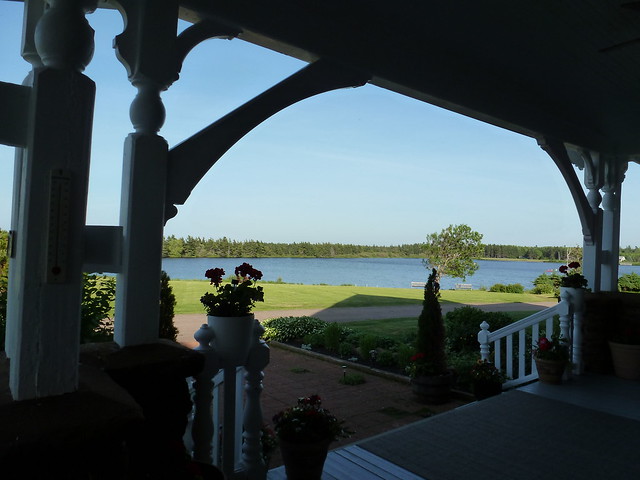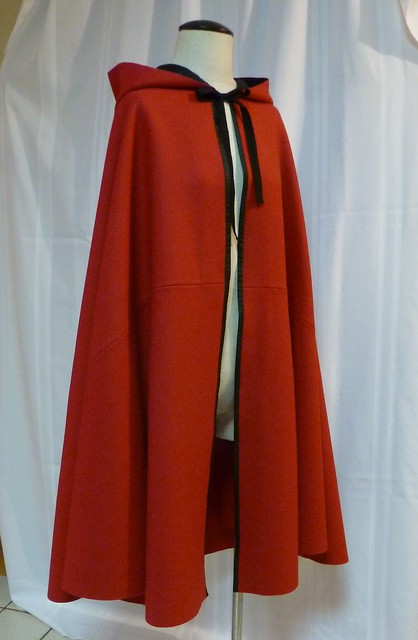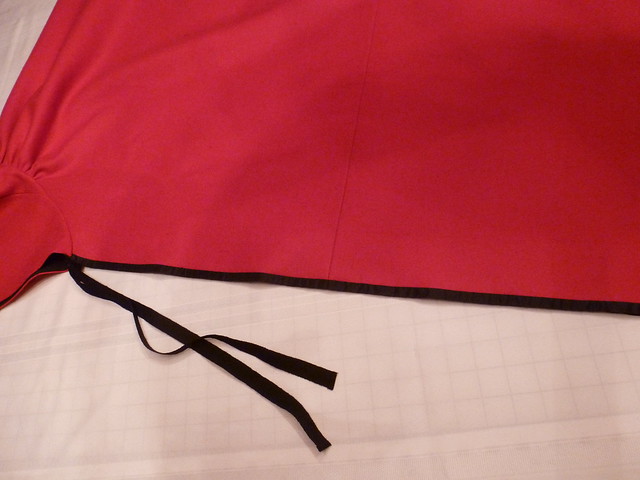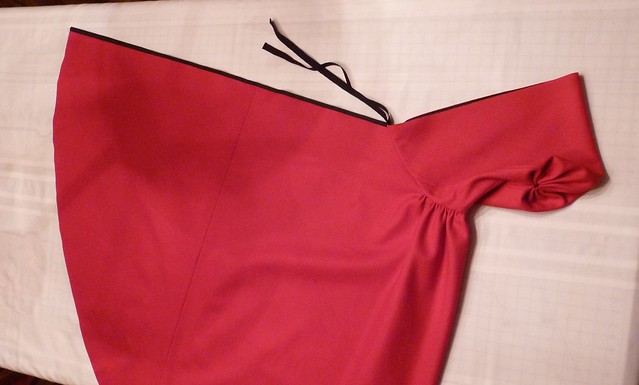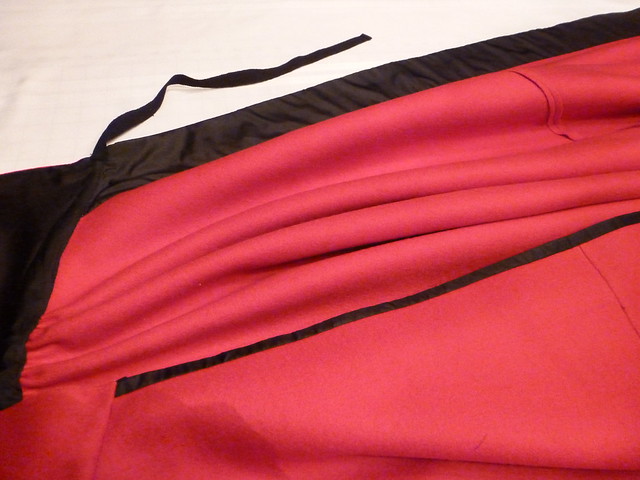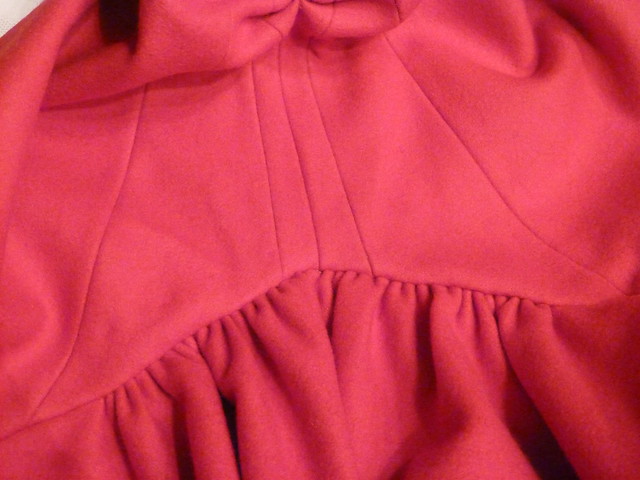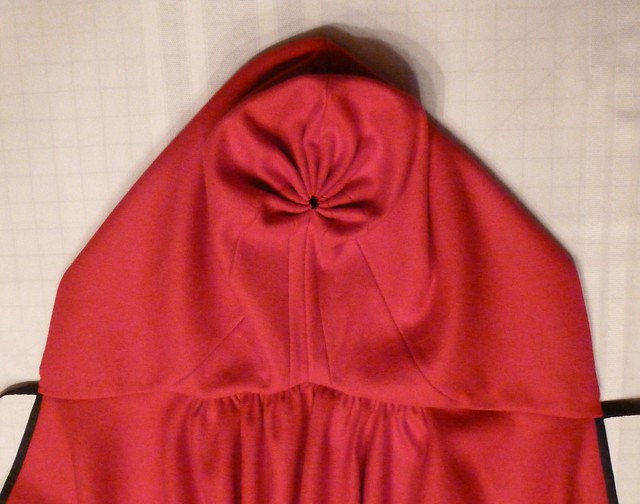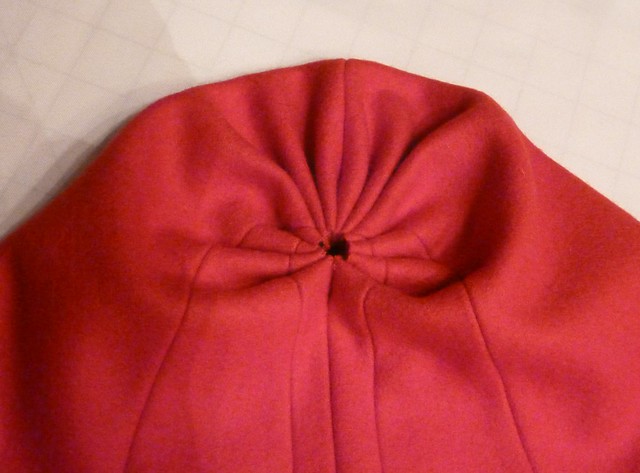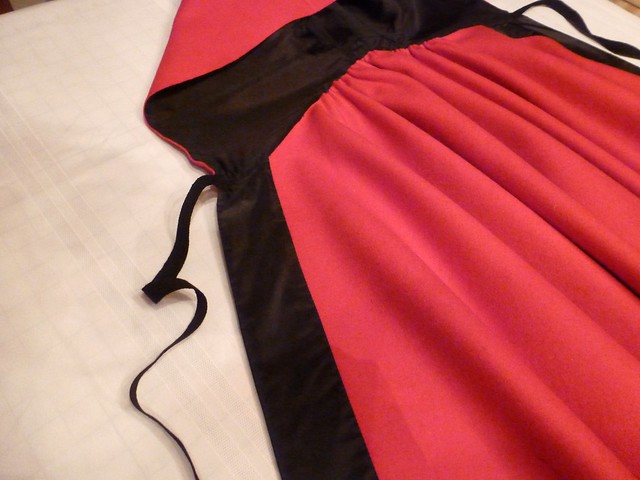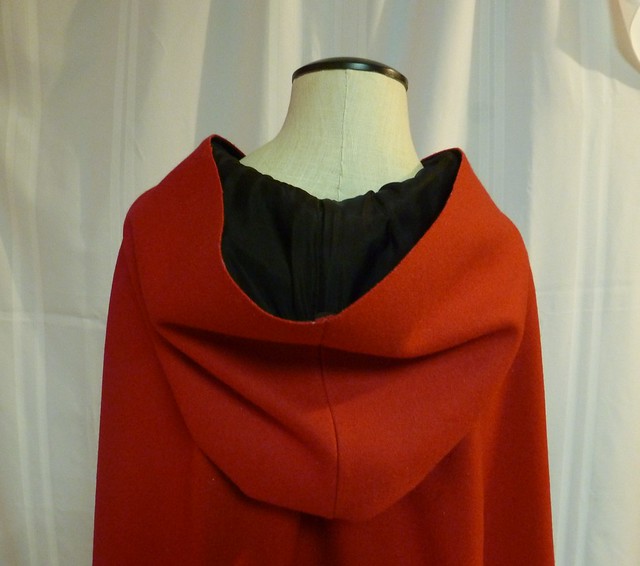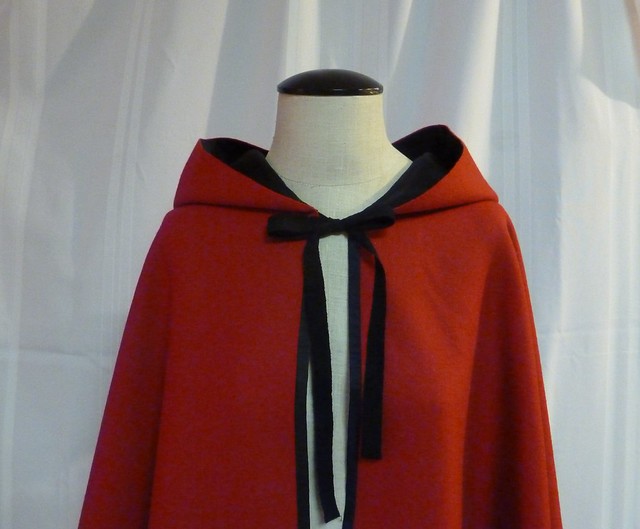**We began this series back in August, 2014 but life - oh, crazy, crazy life! - took over and finishing it went woefully neglected for over a year. Well, we're back now and ready to resume the chronicle of our (last) summer vacation adventures. Better late than never, eh?! If you missed the previous posts in the series recounting our PEI 2014 trip, you can find them here and here.**
It isn't often that you can actually stay at a place that has both hosted royalty and been featured in some of your favorite movies and tv series, but Dalvay-By-the-Sea is one of those unique places. Best known as the "White Sands Hotel" in the Sullivan Anne of Green Gables movies and on the Road to Avonlea series, historic Dalvay is owned by Parks Canada and operated as a small summer hotel and restaurant. It is located on Prince Edward Island's beautiful north shore, within the boundaries of Prince Edward Island National Park, which means that the shoreline on which it sits, along with all of the surrounding area, is protected from development, keeping it pristine and looking just like one imagines it must have looked back when the beautiful mansion was built.
The mansion was built in the Queen Anne Revival style, almost entirely out of locally-sourced materials. The exterior facade and the interior fireplaces, for instance, are all local sandstone, retaining that beautifully distinctive red tint for which PEI soil is so famous.
Dalvay-By-the-Sea's story is a fascinating (and rather sad) tale of an American oil fortune, two high society beauties, and fallen European royalty. The mansion house was built in 1895-6 by wealthy American businessman Alexander MacDonald, who once served as president of John D. Rockerfeller's Standard Oil Company. MacDonald was born in Scotland, and PEI immediately impressed him with its charm, natural beauty, and nostalgic reminders of his homeland. On his first visit to the Island, he purchased 120 acres of land on the north shore on which to build a summer retreat for his family, christening it "Dalvay" in memory of his boyhood home of the same name. Annual costs to maintain the summer home were reportedly upwards of $10,000 a year. Much of this went to maintain a large household and groundskeeping staff, who were always on hand to serve not just the family, but the ever-increasing flow of guests who helped to make Dalvay's summer parties so legendary.
MacDonald's only daughter died young, leaving him to raise his two granddaughters, Helena and Laura. The family enjoyed a number of happy summers on the property until 1910, when MacDonald passed away, leaving the house in trust to his two beloved granddaughters. Their $15 million inheritance reportedly elevated them to two of the wealthiest young heiresses in pre-WWI worldwide high society. Both girls made socially brilliant marriages as a result of their new status: Helena married Prince Murat of France, while sister Laura married Italian Prince Rosspiglioisi.
Their massive family fortune remained legally under the management of their father, however, and sadly, poor investments on his part all too quickly decimated the family funds. Both girls were divorced by their respective spouses after they lost their fortunes. Laura moved to NY and worked for the remainder of her life to support her two children, and penniless Helena passed away at only 38 from cancer.
With Laura no longer capable of maintaining the vast and remote estate, Dalvay had to be sold. It passed through a number of hands (at one point, house, furniture, and land were all sold to the caretaker for a mere $486.57, the cost of the back taxes) until 1937, when George Deblois purchased it and then sold the house and property to the Canadian government to be integrated into the newly-established Prince Edward Island National Park. The house itself is also a Classified Federal Heritage Building.
Dalvay's official history and gallery pages have some really neat historical photographs, if you're interested in seeing what the house and grounds looked like in their heyday around the turn of the century. Not much has changed, comparatively, and today, images like these of Dalvay in days past are displayed throughout the hotel, so you really get a sense that you're standing in history just by being there. The lobby also has several large albums available for guests to peruse that are chock-full of photos and press clippings chronicling every aspect of the estate's life and times.
On their tour of Canada in 2011 not long after their wedding, Prince William and Kate visited PEI for several days and stayed overnight at Dalvay. Not a bad honeymoon spot, with views like these from your window every morning!
We had grand plans to make ourselves full 1908-1914 wardrobes for this trip (1908 because it's the year Anne of Green Gables was published and 1914 because, well, it seemed the sensible pre-war fashion end date and it was 2014, so...). All of our source and citation material was compiled and all of the fabric, hats, parasols, shoes, and other materials were acquired and I had started cutting...and sewing...and sewing...and got as far as finishing one hat, (almost) both corsets, and cutting out both of our combinations. And that was it. *sigh*
In other words, of course, we bit off way more than we could chew, forgetting how difficult and time-consuming it always is to research and then build an entire outfit from the skin out when you're dealing with an era that's entirely new to you. So all that dreaming about lounging on the porch of Dalvay sipping tea in a broad-brimmed hat loaded with flowers...and all that scheming about lawn bowling in the shadow of the hotel dressed in 1909 lingerie dresses...yeah. Didn't happen. Oh well. I guess there's just going to have to be a "next time" to take care of all that unfinished business. Not that we need an excuse, mind you... ;-) Anyone else up for a costumed frolick across PEI?!
So in the meantime, here's to dreaming ourselves back in time...
Additional photos can be found in our PEI 2014 album on flickr.
If you're interested in staying at Dalvay, the hotel offers 25 guest rooms within the main mansion house, along with eight three-bedroom cottages on the lakeside. Both inn and restaurant are open seasonally from June through October. Reservations can be made by visiting their website.
Saturday, October 10, 2015
Wednesday, October 7, 2015
It's that time of year again...
...when the costume closet gets cleaned out!
We've just done another purge of the costume closet, since space is getting tighter and we both have too many pieces we're not wearing often enough to justify keeping them. That, and we're both in the midst of plotting new sewing adventures and need the space (and the money!) to make them happen. So here's another chance to add something new to your own period wardrobes!
1) The first gown up for grabs is the first gown I ever completely hand-sewed for myself. I know I said that about the blue wool gown I parted with last year, but I was wrong - I totally forgot about this one! (yes, that's how long it's been since I've worn it!) This is an Italian or "quartered back" style gown dated 1775-1785, scaled up from the gown on pages 37-9 in Patterns of Fashion. The cuff detail was copied from an Indian chintz caraco with an identical date range that is in the V&A. For further details on the cut, construction, trim, and fabric choice, and to see additional photos, see the gown's Threaded Bliss post from 2010. Sizing and condition information can be found on the Ebay listing.
2) I have to admit that it's hurting my heart to have to part with the second gown, but I'm doing it for the simple reason that it no longer fits me. I debated long and hard for a couple of years whether or not I wanted to pick it apart and remake it because I just adore the fabric color and have never seen anything like it since, but in the end, I feel like that would be wasting all the hours of work that went into hand-sewing the entire thing. Yes, picking it apart was the period solution to the size-change problem, but it just feels silly to me to throw all of that work and time away when I know someone else could use it. So here goes...taking the plunge and letting it go...*sniff*
This is a lavender silk taffeta gown with a matching petticoat. Both gown and petticoat were cut to go over a very small hoop which is not included, but you could very easily make a pair of small hip pads (we're talking maybe only an inch or two on each hip, that's all it needs) to fill in the skirts if you want to. To be totally honest, though, when I just put the gown on the mannequin to take measurements, I didn't even notice any difference in the hem length at the sides, so you could even get away without any skirt supports. The coordinating hat is not for sale (though I'd be happy to make you something similar if you really wanted it!).
The gown is pleated in back and trimmed with simple box pleated self-fabric around the neckline and sleeves. The full run-down on the details is in the Threaded Bliss post, with all information about sizing and condition in the Ebay listing.
3) Next up is a Regency gown that Ashley made, and it, too, is entirely hand-sewn. This sadly never even got a Threaded Bliss post because she only wore it once to a ball and we didn't get any decent pictures then. It's based on an 1823 gown with a net overlay in Costume in Detail, pgs. 119-120; we just simplified the sleeves and didn't do the padded hemline detail to bring it forward in time to about 1810-1815. The photos don't do the true color justice - it's a pale blue shot with a sort of brushed gold tone that's really pretty when the light catches it. Check out the Ebay listing for more photos and for sizing information.
4) Finally, Ashley has also decided to part with her gold linen jacket. This was an old stand-by for her for years and she still loves it, but it no longer fits and she has a couple of newer jackets to replace it with, so it's time to let it go. This is the most worn of the pieces we're listing, but it's still in great shape and has many more years of life left in it. It's absolutely ideal for a camp-following or working-class impression! Like all of our things, it's entirely hand-sewn, with the fabric, cut, and construction all fully documented - please check out the Threaded Bliss post for all those goodies. And once again, sizing and condition are given in the Ebay listing.
If you have any questions about any of these pieces or would like additional details or photos, please just let us know and we'll be happy to provide whatever you need! Help us give these Past Pretties new, loving homes!
We've just done another purge of the costume closet, since space is getting tighter and we both have too many pieces we're not wearing often enough to justify keeping them. That, and we're both in the midst of plotting new sewing adventures and need the space (and the money!) to make them happen. So here's another chance to add something new to your own period wardrobes!
1) The first gown up for grabs is the first gown I ever completely hand-sewed for myself. I know I said that about the blue wool gown I parted with last year, but I was wrong - I totally forgot about this one! (yes, that's how long it's been since I've worn it!) This is an Italian or "quartered back" style gown dated 1775-1785, scaled up from the gown on pages 37-9 in Patterns of Fashion. The cuff detail was copied from an Indian chintz caraco with an identical date range that is in the V&A. For further details on the cut, construction, trim, and fabric choice, and to see additional photos, see the gown's Threaded Bliss post from 2010. Sizing and condition information can be found on the Ebay listing.
2) I have to admit that it's hurting my heart to have to part with the second gown, but I'm doing it for the simple reason that it no longer fits me. I debated long and hard for a couple of years whether or not I wanted to pick it apart and remake it because I just adore the fabric color and have never seen anything like it since, but in the end, I feel like that would be wasting all the hours of work that went into hand-sewing the entire thing. Yes, picking it apart was the period solution to the size-change problem, but it just feels silly to me to throw all of that work and time away when I know someone else could use it. So here goes...taking the plunge and letting it go...*sniff*
This is a lavender silk taffeta gown with a matching petticoat. Both gown and petticoat were cut to go over a very small hoop which is not included, but you could very easily make a pair of small hip pads (we're talking maybe only an inch or two on each hip, that's all it needs) to fill in the skirts if you want to. To be totally honest, though, when I just put the gown on the mannequin to take measurements, I didn't even notice any difference in the hem length at the sides, so you could even get away without any skirt supports. The coordinating hat is not for sale (though I'd be happy to make you something similar if you really wanted it!).
The gown is pleated in back and trimmed with simple box pleated self-fabric around the neckline and sleeves. The full run-down on the details is in the Threaded Bliss post, with all information about sizing and condition in the Ebay listing.
3) Next up is a Regency gown that Ashley made, and it, too, is entirely hand-sewn. This sadly never even got a Threaded Bliss post because she only wore it once to a ball and we didn't get any decent pictures then. It's based on an 1823 gown with a net overlay in Costume in Detail, pgs. 119-120; we just simplified the sleeves and didn't do the padded hemline detail to bring it forward in time to about 1810-1815. The photos don't do the true color justice - it's a pale blue shot with a sort of brushed gold tone that's really pretty when the light catches it. Check out the Ebay listing for more photos and for sizing information.
4) Finally, Ashley has also decided to part with her gold linen jacket. This was an old stand-by for her for years and she still loves it, but it no longer fits and she has a couple of newer jackets to replace it with, so it's time to let it go. This is the most worn of the pieces we're listing, but it's still in great shape and has many more years of life left in it. It's absolutely ideal for a camp-following or working-class impression! Like all of our things, it's entirely hand-sewn, with the fabric, cut, and construction all fully documented - please check out the Threaded Bliss post for all those goodies. And once again, sizing and condition are given in the Ebay listing.
If you have any questions about any of these pieces or would like additional details or photos, please just let us know and we'll be happy to provide whatever you need! Help us give these Past Pretties new, loving homes!
Saturday, January 31, 2015
Current (and Upcoming!) Exhibit: "Dressing Downton: Changing Fashion for Changing Times"
Did you (like us, boohoo!) miss out on getting to see the "Costumes of Downton Abbey" exhibit while it was at Winterthur? Well, never fear! We've done a bit of sleuthing and have some exciting news! The exhibit has been slightly revamped and is now slated to visit several other historic sites and museums around the country over the next couple of years, so there's still plenty of time to catch a glimpse of these iconic pieces of costume drama history!
"Dressing Downton: Changing Fashion for Changing Times" will feature approximately 35 different costumes and accessory items from the series' first four seasons. The pieces on display will span fashions from 1912 through the First World War and all the way up into the mid-1920s.
5 February - 25 May 2015
Biltmore, Asheville, NC
The first stop for "Dressing Downton: Changing Fashion for Changing Times" will be Biltmore House and Gardens, the sprawling estate built by George Vanderbilt between 1889 and 1895. Drawing on its Highclere-esque opulent turn-of-the-century setting, Biltmore plans to fully integrate the costumes into its incredible period rooms and the high-society domestic stories they tell. Admission to the exhibit is included in your general admission ticket.
Additional tour dates include:
20 June 2015 - 20 September 2015
The Paine, Oshkosh, WI
(click for details)
October 2015 - January 2016
Virginia Historical Society, Richmond, VA
As we hear about additional dates, we'll update this post! So...who's going?!!!
***UPDATE ON MARCH 22nd: The official "Dressing Downton" website has just gone up! There, you can find the full list of tour dates, along with lots of additional pictures and information!***
Photo linked from Biltmore's "Dressing Downton" exhibit page.
"Dressing Downton: Changing Fashion for Changing Times" will feature approximately 35 different costumes and accessory items from the series' first four seasons. The pieces on display will span fashions from 1912 through the First World War and all the way up into the mid-1920s.
Photo linked from Biltmore's "Dressing Downton" exhibit page.
5 February - 25 May 2015
Biltmore, Asheville, NC
The first stop for "Dressing Downton: Changing Fashion for Changing Times" will be Biltmore House and Gardens, the sprawling estate built by George Vanderbilt between 1889 and 1895. Drawing on its Highclere-esque opulent turn-of-the-century setting, Biltmore plans to fully integrate the costumes into its incredible period rooms and the high-society domestic stories they tell. Admission to the exhibit is included in your general admission ticket.
Additional tour dates include:
20 June 2015 - 20 September 2015
The Paine, Oshkosh, WI
(click for details)
October 2015 - January 2016
Virginia Historical Society, Richmond, VA
As we hear about additional dates, we'll update this post! So...who's going?!!!
***UPDATE ON MARCH 22nd: The official "Dressing Downton" website has just gone up! There, you can find the full list of tour dates, along with lots of additional pictures and information!***
Friday, January 30, 2015
Threaded Bliss
A Reproduction Red Wool Broadcloth Cloak
with details taken from two extant examples
One of our friends recently joined our Rev War unit and is looking to update to her wardrobe to reflect our CT-based interpretation. She was in need of a cloak to help weather the sometimes below-freezing CT winter temperatures and knew she wanted a red one copied directly from the one featured in Costume Close-up, since that was one of the pieces that made her first start to fall in love with 18th century fashion. So we added a couple of extra details copied from a similar extant cloak with a CT provenance and this is the end result! I'm in love and want one for myself now! :-) So here are all the nitty-gritty details:
The pattern: The pattern for this cloak is taken directly from an extant original in the collections of Colonial Williamsburg (CW acc. no. 1953-968), patterned to scale in Linda Baumgarten's indispensable Costume Close-up, pgs. 54-56. Every detail of the construction, right down to the piecing on the hood and the body, has been reproduced, with the exception of the slits for the arms, which we left out simply because our friend didn't think she'd use them, which would render them rather counter-productive by letting the cold air in!
The cloak's source pattern and primary inspiration, a red wool broadcloth example
from the collections of Colonial Williamsburg (CW acc. no. 1953-968).
Photo from the CW Online Collections database.
Inspirations: The hood lining and front facing details were inspired by the Williamsburg cloak. Costume Close-up indicates that "originally, the hood was lined with with soft thin silk and the cloak front was faced with taffeta; there was not a full lining." What isn't specified, however, is the color of the original hood lining and front facings, so I turned for further inspiration to another cloak source which I had the opportunity to examine in person last year, this one with the requisite CT provenance! Similar in cut and construction to the CW example, this second inspiration cloak owned by the CT Historical Society features the same hood lining and front facing details that Baumgarten cites - and in a very striking black!
The second inspiration cloak, this one from the
CT Historical Society (CHS acc. no. 1972.3.1).
Photo from the CHS eMuseum listing.
The hood of the CHS cloak is half-lined in a thin black silk. The front opening edges of the cloak's body are bound and faced with strips of black silk which are sewn on in such a way that only a narrow band of black is visible from the outside, and a much wider band of 2 5/8" on the inside. These details were translated onto my reproduction.
Construction details: The cloak is entirely hand-sewn in a golden-brown silk thread, which reproduces the thread choice on the extant CW piece.
What I find so fun and exciting about cloaks - which otherwise might appear pretty boring to make! - is how ingenious they are when it comes to piecing in order to make the most out of the least amount of fabric. Baumgarten estimates that the CW cloak was cut from 2 3/4 yds of 55", which is pretty spot-on; mine ended up taking almost exactly that same length out of 58" width broadcloth.
The cloak's body was cut to make use of the full width of the original 55" fabric. Because my fabric was a touch wider, I of course had to trim off the leftover width on both sides to maintain the measurements and proportions of the original. To complete the full half-circle sweep, the sides are then pieced onto the central body in long, backstitched seams.
The piecing of the cloak's wide body falls at about half-way down the center front.
The cloak's body piecing helps it achieve a generously full half-circle sweep.
Once the body seams were sewn, I then applied the black silk taffeta bindings/facings to the front edges. These serve to encase the front edges to protect them from wear and also add a bit of interest to the front of the cloak with the sharp, eye-catching contrast of color. Only about 3/8" of black is exposed on the outside, with 2 5/8" strips visible on the inside. The remainder of the cloak's edges (including the hood) are left unfinished, as per both original sources. The broadcloth is well-fulled, more than sufficient for maintaining the smooth cut edges.
The cloak half-closed (on the top) and half open (on the bottom)to show the
contrasting widths of the black silk taffeta strips that form the center-front bindings/facings.
The hood is assembled from six different pieces which were all backstitched together with narrow seam allowances to eek out as much fabric as possible. Each of the pieces was cut with the grainline going in a different direction, a feature I was also careful to reproduce as I cut them out. I wish I'd taken a picture of the hood pieces all laid out together before I stitched them because the piecing is a little tough to see on the finished hood.
Detail of the hood piecing.
The hood is then lined in a very lightweight black silk before its back seam is sewn and arranged into the characteristic "fan" pleating detail that appears on the majority of extant cloaks from this period.
The back of the hood, with the signature "fan" pleating.
Finally, the hood is sewn to the body of the cloak. The gathering of the cloak's wide body is concentrated at the center back to allow the cloak to drape gracefully over the shoulders.
The cloak folded in half to show the concentration of pleats at the back of the cloak,
with the front half of the hood joined smoothly to the body.
The cloak spread flat, shown from the outside/back.
The hood lining is used to cover the neckline seam, black wool tapes are added for ties, and then the cloak is finished!
Interior of the cloak.
The hood view from the back when worn, with the black lining providing a
strikingly eye-catching contrast to the red.
Black wool tape is used for the ties, which help support the weight of the cloak when worn.
The fabric: The red wool is a superfine broadcloth of a heavily fulled weight from Burnley and Trowbridge. It's some of the nicest quality broadcloth I've ever worked with (so yes, of course I had to buy some to make a cloak for myself, too!). The color is absolutely spot-on in terms of a match for the inspiration sources.
The black silk used in the hood lining and the front body facings is of two different weights to accurately reflect those used on the original CW example. The hood is lined in a very light-weight silk persian and the front openings are faced with a mid-weight silk taffeta.
Finishing the look: I guess we'll just have to wait for the cloak's first official airing before we finish this section! Stay tuned! :-)
Subscribe to:
Comments (Atom)


